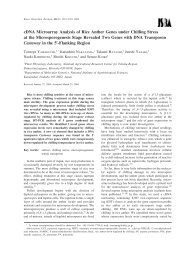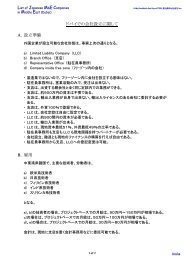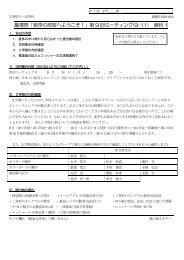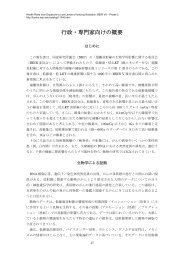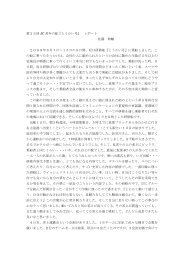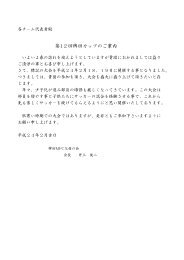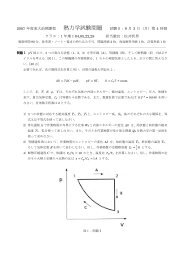INTRODUCTION<strong>The</strong> construction of the <strong>Collins</strong> class submarines was Australia’s largest, most expensive and most controversialmilitary purchase. <strong>The</strong> project had its origins in the late 1970s and the last submarine was delivered to the navyin 2003. During that period it was subjected to an unprecedented level of media scrutiny and criticism, becamehighly politicised and on several occasions faced the prospect of being abandoned.<strong>The</strong> general public perception of the submarine project is that it was a hugely expensive failure and that thesubmarines are noisy ‘dud subs’. <strong>The</strong>se views are not shared by those who were involved in designing, buildingor operating the submarines, or by the navy leadership and military analysts who see the project as anextraordinary industrial achievement and the submarines as potent weapons and among the best ofconventional submarines.<strong>The</strong>re is much that is unique about the <strong>Collins</strong> submarine project. It was the first class of major warshipdesigned specifically for Australian requirements – earlier classes were either bought from overseas or built toplans developed for other navies. Australian industry was more heavily involved than with any other modernmilitary purchase. It was the largest electronics systems integration project ever undertaken in Australia. <strong>The</strong>lengthy list has led advocates for the project to compare it with the Snowy Mountains Scheme for its ‘nationbuilding’significance.Nonetheless the project encountered serious difficulties, and for many different reasons these were notmanaged well. Even with the benefit of hindsight there is passionate disagreement on what went wrong, why itwent wrong and what should have been done. <strong>The</strong> only agreement among those involved in the project is thatthe final result is a fleet of excellent submarines.I was approached by Cambridge University Press to write this book, principally, I think, because I was the onlyperson they could find with no preconceptions of the submarine project. This was accompanied by an absenceof knowledge: I approached the project as a blank canvas, to be filled in by talking to as many of the protagonistsas possible along with surveying the massive quantity of documents generated during the project. My training isin history and I have attempted to carry out the research and analyse the evidence using the methods of ahistorian, although historians are not trained to deal with the strong emotions still felt about the project by manyof those involved.<strong>The</strong> aim of the book is simply to tell the story of the submarine project from its origins to about 2005. It is anextraordinary story with heroes and villains, intrigue, lies, spies and backstabbing. It is also a story of enormouscommitment and resolve to achieve what many thought was impossible. <strong>The</strong>re are lessons to be learnt from thestory, but they are for the readers to discover for themselves rather than the authors to prescribe, and differentpeople will see different lessons.<strong>The</strong> book deliberately avoids military jargon, ‘techno-speak’ and the universal euphemisms of military folk –
where weapons are called capabilities, assets, deterrents or systems, wars are conflicts or contingencies, and allmilitary activities, however aggressive in intent, come under the umbrella term ‘defence’. We have also avoidedthe military’s compulsive tendency to over-use capital letters and acronyms. <strong>The</strong> style of the book will be foreignfor those of service background or military enthusiasts, but is designed to make the story accessible to thoseconfounded by sentences like, ‘Raytheon has received a NAVAIR contract to further develop the JSOW AGM-154C1 (formerly JSOW Block III)’. Nor will the reader find such grandiloquent creatures as CINCPACFLT orCOMNAVSEASYSCOM. Both are (apparently) familiar figures to modern sailors, though Nelson must beshuddering in his grave.This book is not an analysis of what has been written about the project by journalists and academics and hasgenerally avoided using secondary sources. It is based on over 130 interviews with people involved in almostevery aspect of the project, and the documents, minutes, letters and diaries generated during the course of theproject. <strong>The</strong>se include the major evaluation studies of industry proposals, the Tender Evaluation Board Reportand the <strong>Submarine</strong> Evaluation Team Report, the minutes of the Force Structure Committee and the Chief ofNaval Staff Advisory Committee, the Project Quarterly Progress Reports, the Vickers Cockatoo Island DockyardReport on the construction of submarines in Australia and many other reports on the strategic and technicaljustifications for the project, and departmental files on specific issues.My task was made possible by the advice and guidance of my co-author, Derek Woolner, a military analystlong exposed to the ways of the Canberra bureaucracy. Derek carried out the documentary research inCanberra, wrote chapters 7–10, 15 and 20, contributed sections for several other chapters and helped in manyother ways. Admirals Peter Briggs and Boyd Robinson provided constant help and opened many doors, withoutin any way determining the conclusions reached. <strong>The</strong> staff of the submarine branch of the Defence MaterielOrganisation assisted in many ways and Colin Cooper deserves special thanks for maximising the authors’ useof the official record by his management of the security restrictions of classified documents.Many people have read portions of the draft and the authors thank them all for their helpful comments. We owespecial thanks for advice and encouragement to John Jeremy, Ron Dicker, Andy Millar, Jim Duncan, OlleHolmdahl, Oscar Hughes, Graham White, Greg Stuart and Hans Ohff. My visit to Sweden and Germany inNovember 2006 was made possible by Roger Sprimont, who arranged my interview program and helped greatlyin many ways. I received welcome help and hospitality from Pelle Stenberg, Ulf Edman, Pår Bunke, Hans PederLoid, Karl Bertil Stein, Kurt Blixt, Ebbe Sylven, Tomy Hjorth, Paul-E Pålsson, Olle Person, Gösta Hardebring,Roine Carlsson, Carl-Johan Åberg, Hans Saeger and Juergen Ritterhoff. <strong>The</strong> staff of Kockums went out of theirway to assist me and Gunnar Öhlund, Tore Svensson and Bo Benell provided me with much useful information.Similarly, ASC Pty Ltd (formerly the Australian <strong>Submarine</strong> Corporation) gave me every assistance and I amgrateful to Jayne Correll for organising interviews with ASC staff.Geoff Hook and Peter Nicholson have kindly given permission to reproduce their cartoons, which encapsulatesome of the more acrimonious debates and controversial aspects of the submarine saga. <strong>The</strong> followingindividuals and organisations have generously allowed us to use their photographs to illustrate significant stages



